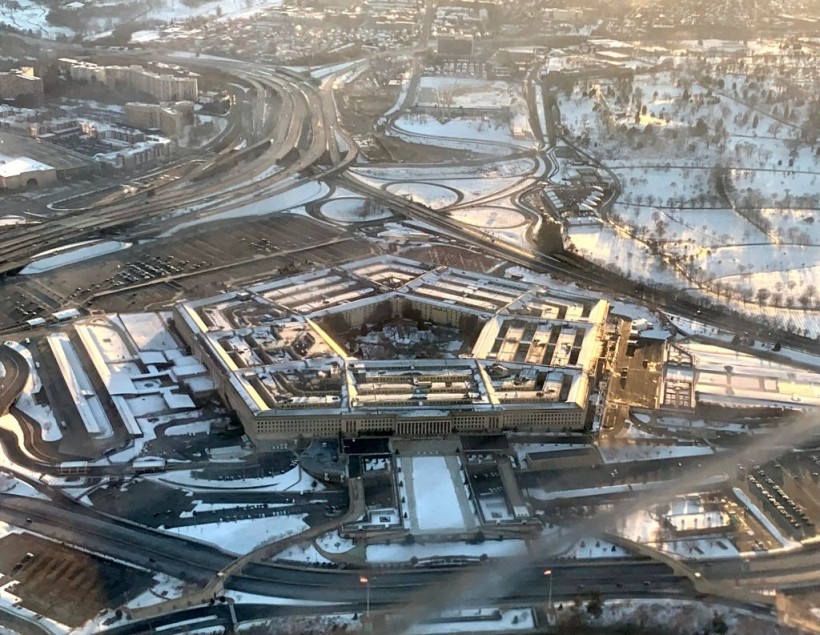
(Photo : EVA HAMBACH)
The United States' budget proposal for the fiscal year 2023 includes the development of hypersonic-speed weapons, which is Pentagon's top goal.
The Pentagon's fiscal year 2023 budget keeps hypersonic-speed attack weapons as a top development goal. According to documents disclosed to reporters on March 28, the Department of Defense requested $4.7 billion in research, development, test, and evaluation funds for multiple programs.
On Monday, US President Joe Biden issued a US$5.8 trillion budget plan focused on addressing America's security and economic problems, with an eye toward Russia's war in Ukraine and the competitive challenges offered by China.
US 2023 Budget Plan Includes Development of Hypersonic Weapons
For the fiscal year 2023, the budget requests $813.3 billion in national security expenditure, with $773 billion going to the Pentagon - more than $30 billion more than Congress approved this year. A third of the Pentagon's budget would be spent on investment, such as weapons purchases and research.
A total of $135 billion would be spent on improving military readiness, and the United States nuclear triad, which includes land-based intercontinental ballistic missiles, bombers, and nuclear-armed submarines, would receive a $34.4 billion boost.
A total of $60.4 billion is requested for the State Department and US Aid for International Development in the budget. Their top goals are $1.6 billion for Ukraine and $4 billion to strengthen US alliances and leadership to compete successfully with the People's Republic of China (PRC) and Russia. For its manufacturing innovation and commercialization programs, the National Institute of Standards and Technology stands to collect US$372 million, South China Post reported
In February, Defense Secretary Lloyd Austin hosted more than a dozen executives from the hypersonics industry as a demonstration of the Pentagon's commitment to speeding up the development of hypersonic weapons systems, which the department considers a technology priority as it tries to keep up with China and Russia.
The executive roundtable was officially part of a series of engagements focusing on the Pentagon's priority technological development sectors, including hypersonics, that Heidi Shyu, undersecretary of defense for research and engineering, highlighted in a Feb. 1 memo. She announced that she will craft a new national defense science and technology strategy, which will be influenced by the yet-to-be-released 2022 National Defense Strategy. She highlighted three groups of 14 technology areas and announced that she will craft a new national defense science and technology strategy.
Shyu put hypersonics in the defense-specific category, stating that strategic competitors, such as China and Russia, have already deployed such capabilities and that the Pentagon "will develop leap-ahead and cost-effective technologies for our air, land, and sea operational forces."
Shyu's 14 important technology sectors generally coincide with the 19 critical and emerging technologies listed by the National Science and Technology Council on February 7. The White House Office of Science and Technology Policy produced the list, which was created to highlight advanced technologies that are important to US national security and to guide efforts to promote US technical leadership.
Read Also: China Rapidly Ramps Up Military Forces as US Troops Held Over 100 Drills Near Beijing in 2021
US Aims a Five-Year Defense Plan
This top-level drive for the Defense Department to refocus on hypersonic weapons systems comes even though officials admit there are still unanswered issues regarding the overall cost, mission, and necessary number of US hypersonic weapons, as per Arms Control.
The Defense Department stated in its budget documents for 2023 that it intends to field hypersonic weapons within the five-year defense plan. By the fiscal year 2023, there would be a land-based hypersonic missile battery, hypersonic weapons onboard DDG 1000 destroyers by the fiscal year 2025, and a hypersonic cruise missile by the fiscal year 2027.
The US Navy (USN) will spearhead the development of a common hypersonic glide body (C-HGB) for use on hypersonic weapon programs across the services, according to the Pentagon. The Alternate Re-Entry System, created by Sandia National Laboratories and the US Army, is the basis for the common glide vehicle.
The US Navy's Conventional Prompt Strike (CPS) program will get $1.205 billion in 2023, down from USD1.374 billion in 2022 but still more than USD1.008 billion in 2021. The CPS program is developing a missile with the C-HGB and a 34.5 in a two-stage rocket that might be used to equip the US Navy's Virginia Payload Module and DDG 1000 ships, according to Janes.
Related Article: South Korea's Cheolmae II Surface-to-Air Missile System Gets Upgrades for Better Performance After North Korea's Recent Launch









